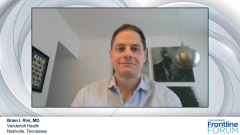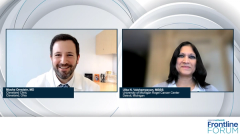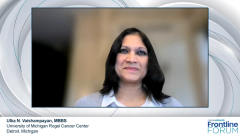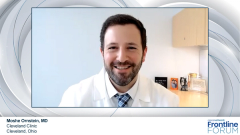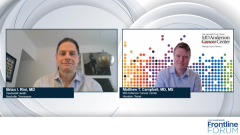
Practice Pearls for Optimizing the Management of Advanced RCC
Experts Ulka N. Vaishampayan, MBBS, and Moshe Ornstein, MD, look toward the future treatment paradigm of both clear cell and non–clear cell renal cell carcinoma.
Episodes in this series

Transcript:
Ulka N. Vaishampayan, MBBS: With that, Moshe, if you want to give us some final thoughts, 3 takeaway points to start concluding this session.
Moshe Ornstein, MD: My 3 takeaways from IKCS [International Kidney Cancer Symposium] and from kidney cancer research is number 1, the standard of care in almost all patients, with the exception of those who have a fairly absolute contraindication, should be an IO [immuno-oncology]-based combination. Whether it’s IO/IO, with ipi [ipilimumab (Yervoy)]/nivo [nivolumab (Opdivo)], or an IO/TKI [tyrosine kinase inhibitor]. For me, I use patient’s symptoms to help guide that decision making. Point number 2 is perhaps more important than figuring out which is the, quote unquote, best, because we don’t know and we don’t have head to head studies, is the ability to say, I know how to manage toxicities when I give IO-based regimens, and educating and empowering patients and our clinical teams to help care for these patients. It’s the education and the anticipation as you mentioned. Lastly, in the adjuvant setting, there’s a role for pembrolizumab [Keytruda], but I would be careful in who we give it to. I think selecting those higher risk patients is still a bit of an easier decision, but for the patients who still have a high risk of recurrence, but relatively on that spectrum of lower risk, there’s more of a nuanced discussion about the risks and the benefits. I’ll turn it to you to close.
Ulka N. Vaishampayan, MBBS: Thank you. This has been an interesting discussion. I agree with all your points, Moshe. You made excellent points in consideration of treatment and management of kidney cancer. The couple of things that I would add is it’s extremely wonderful to know that long term remissions are happening in advanced kidney cancer, and they’re happening frequently. To get a median survival of half of the patients living more than 4 years is remarkably promising. That to me was a big reassurance that doing all this combination immune checkpoint therapy or combination with VEGF TKI is in the long run paying off for some of our patients. We are not curing everybody and we must look at novel combinations and novel targets and pathways. To me, the HIF-2 [hypoxia-inducible factor 2] alpha inhibition looks like the most likely pathway to come into clinical practice soon, but there are many other cytokine pathways and things that are also being investigated, so stay tuned for that. The third one is looking at patient populations that are not getting adequate outcomes with our conventional treatments. We must look at different ways or think about novel ways of addressing that non-clear cell histology, we both brought up as a big thing in that setting. As well as patients with synchronous metastatic disease, patients with autoimmune disease would be some examples of those patient populations that need special attention in optimizing their treatment regimens. This has been an extremely interesting discussion and session for me. Thank you Dr Ornstein for joining and sharing your thoughts. Hopefully all of you will find this interesting and stimulating to think about it in your management of kidney cancer. Thank you for your attention.
Transcript edited for clarity.
Newsletter
Stay up to date on recent advances in the multidisciplinary approach to cancer.


